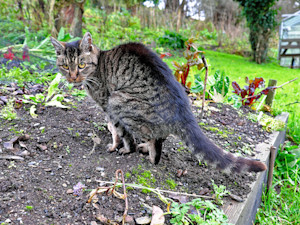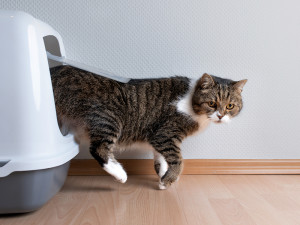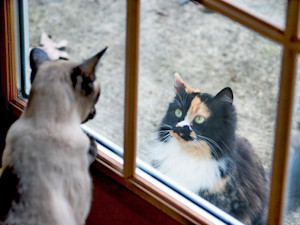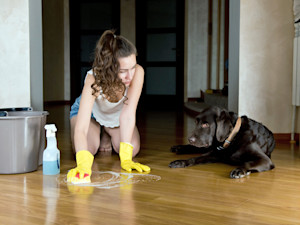Yes, You Can Train an Older Cat to Use a Litter Tray
No more accidents here
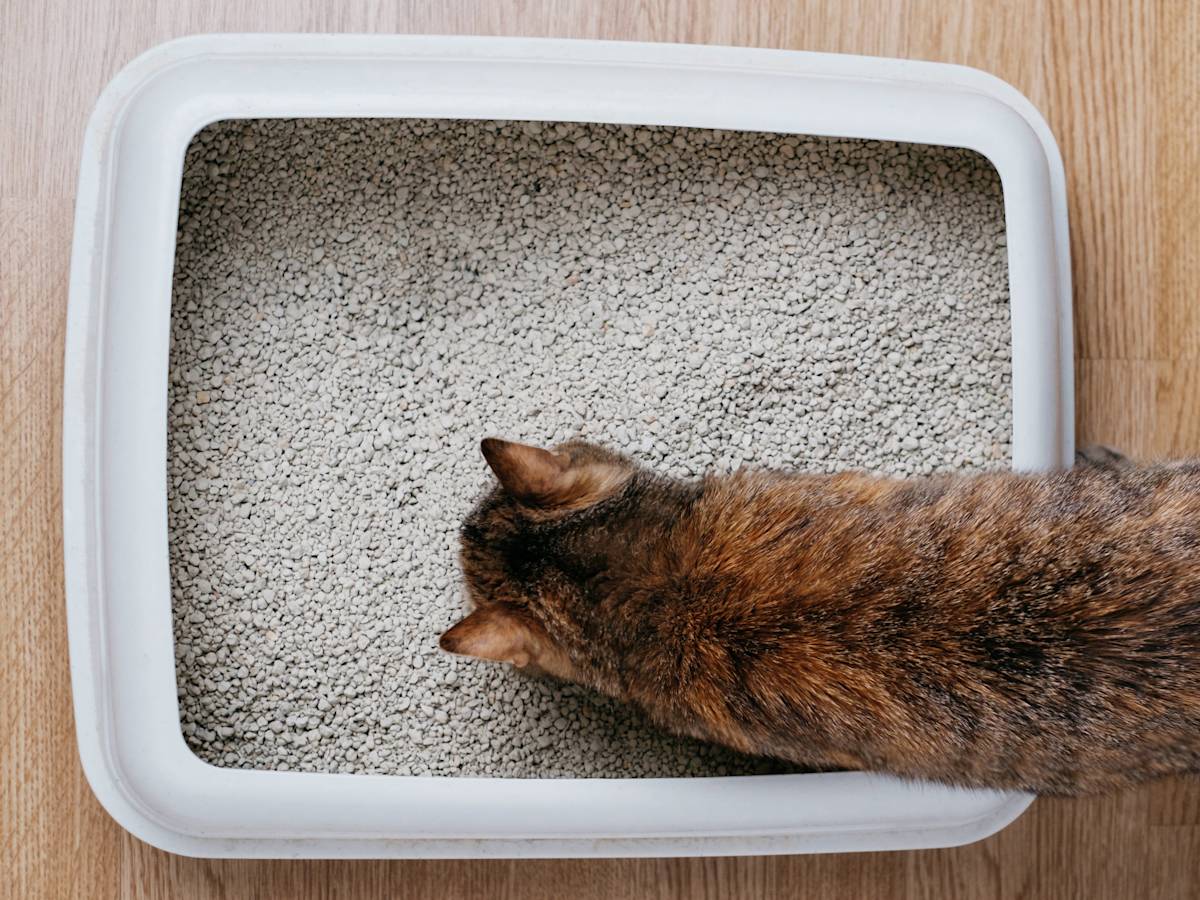
Share Article
Training an older cat to use a litter tray may seem like a daunting task, especially if they’ve led their life as an outdoor adventurer. However with patience, consistency and the right approach it’s entirely possible. We often hear the saying ‘you can’t teach an old dog new tricks’ but is it the same for a cat? Whether they’re new to indoor life or just stubbornly set in their ways, teaching them a new skill doesn’t have to be a struggle.
Choosing the right setup and rewarding your cat’s progress is going to be key in making the process as smooth and stress free as possible. Here’s how to make the switch as smooth as possible and ensure you have all the tools for success – your cat might even thank you for it.
Can you train an older cat to use the litter tray?
Yes, you absolutely can train them to use a litter tray! While older cats may be more set in their ways, they’re still capable of learning new habits with the right approach.
What to do before you start litter box training
Before you dive into litter box training, setting the stage for success is crucial – especially with an older cat. You need to ensure you choose places that are quiet, private and easy to reach. Cats love peace for their business so avoid high traffic and noisy areas.
Choose the right litter tray
The type and size of tray is one of the most important things to consider before you start your training. Many older cats suffer from arthritis, and may struggle with climbing over the sides of the tray. With this in mind, think of providing a litter tray with low sides. This may mean you have to adapt a current tray or think about other options that might be more suitable. I often recommend garden potting trays or car mechanic oil trays. Open styles of trays will often feel less intimidating and they should be big enough to allow your cat to turn around freely. The golden rule is that they should be one-and-a-half times the length of your cat from nose to base of tail.
Choose the right cat litter
If we think back to the domestic cat’s ancestors that lived in the desert, the best choice would be fine, soft clumping types of litter. Having sensitive paws and now achy joints, we want to ensure that the tray is as comfortable as possible for your older cat. Avoid strong scents and weird textures in your litter as they can be a turn-off. What they used as kittens may not be what they would choose as a golden oldie.
Make sure you have enough litter boxes
The golden rule for optimum litter tray distribution is one per cat, plus one extra. However, when we are dealing with an older cat we also need to factor in where we will be placing them. If your older cat has a favourite area of the house, then it is vital that a tray is placed here. This will mean that they don’t have to travel far to use it and therefore are more likely to return. Many pet parents would choose the obvious place and share the bathroom however you need to make sure that this is somewhere easy to navigate for your senior citizen. I would also suggest that a tray is placed on each level of the house so that they don’t have to keep going up and down stairs or walking further than they need to.
How to train your older cat to use the litter box
Step 1: Introduce your cat to the litter box
Introduce the litter box gradually, letting them explore it without pressure. Using praise, strokes and treats when they are near the tray will reinforce the fact that it is not an object to be concerned about.
Step 2: Let them enter the tray
Let them explore the tray at their own pace without forcing them inside. Sometimes, using treats, you can lure them into the tray but always ensure that you take their lead. Forcing a cat to do something can have the opposite of the intended effect. If needed, gently place them in the tray after meals or when they look like they might need to go.
Step 3: Keep the tray clean
Scoop the tray daily and change the litter regularly. Cats are more likely to use a clean tray, so keeping it fresh will encourage good habits.
Step 4: Positive reinforcement only
If they use the tray be sure to use praise whether that be with words, a stroke or a small treat. If they don’t use it just ignore them and try again later.
Step 5: Be patient
Training takes time, especially with older cats that have developed different habits. Remaining calm and consistent will help them feel safe, which is vital when learning new skills. Stick to a routine, keep encouraging positive habits and celebrate their progress.
What to do about accidents
As with any animal (or human!), training your cat is not going to get it right away. Accidents will inevitably happen and so it is important to explore the reasons why an accident happened without punishing your cat for taking a little longer to reach the final goal. Have a look at the setup you’ve provided, could it still be tweaked to help them?
Why you should not punish your cat for accidents
Punishing your cat for litter tray accidents might seem like the natural reaction, however it can make the problem worse. Cats don’t associate the punishment with the action like we do, so acting negatively towards them can actually lead to fear, stress and confusion. This could damage their trust and make them afraid of you, so they might start hiding their accidents. Instead of punishment, focus on why accidents are happening and make adjustments to their environment, routine and litter setup.
How long does it take to litter train a cat?
It is always so hard to predict how long any type of trainingopens in new tab will take as it can vary depending on age, background and personality. Some cats can pick it up in a few days, but others may take a few weeks. Older cats who have been outdoor cats and used to toileting in the wild may be the hardest ones to convince; these cats will need extra patience.
What to do if your cat won’t use the litter tray
I would always break down the training to see if we can explore what may be stopping them. If your cat seems to really be avoiding the litter tray, visit your vet to rule out underlying medical reasons such as pain and discomfort, as this may be an important factor with their refusal.
If your pet comes from a multi-cat household there may be some unhappy dynamics which are influencing their training. Ensure you are cleaning any accident areas up effectively using an enzymatic cleaner to remove all traces of smell. If they can still smell their scent, they may keep going in the same spot. Sometimes you may have to confine your cat to a small room with a litter tray, food, water and bedding until they reliably start to use the tray. If this is your next step, make sure you separate your cat’s litter tray and food and water, preferably across the room, so it doesn’t lead to your cat not eating (no one wants a stinky litter tray wafting over when you’re trying to have dinner). You can then gradually give them more space as they improve.
When to see a vet about litter tray refusal
Watching your cat’s behaviour is vital when we are considering the reasons to why they might be refusing the tray. If you notice them straining to go to the toilet and nothing comes out, this needs urgent veterinary attention (especially in males). If your cat’s litter habits change suddenly or drastically, or if you spot any signs of pain such as crying or yowling, they have blood in their urine or faeces, or have started to leave accidents when they were previously tray users, it’s worth getting a professional opinion.
Bottom line: training an older cat to use a litter tray
With a little patience and the right approach, your older cat can successfully transition to using a litter tray.
Frequently asked questions
Why won't my cat use the litter tray?
If your cat is avoiding the litter tray, they’re not being naughty – they’re communicating. With a little patience and problem-solving, you can figure out what they’re trying to tell you and help them feel comfortable again.
Why is my senior cat not using the litter box?
Older cats may avoid the litter box due to age-related issues such as arthritis, reduced mobility, cognitive decline or medical conditions such as kidney disease or urinary tract infections.
How do I get my older cat to use the litter box again?
Ruling out medical reasons, choosing the right setup and rewarding their progress will hopefully make this process stress-free for both you and your feline friend.
Resources
Amat, Marta, et al. “Stress in Owned Cats: Behavioural Changes and Welfare Implications.opens in new tab” Journal of Feline Medicine and Surgery, vol. 18, no. 8, June 2015, pp. 577–86.
Neilson, Jacqui. “Thinking Outside the Box: Feline Elimination.opens in new tab” Journal of Feline Medicine and Surgery, vol. 6, no. 1, Feb. 2004, pp. 5–11.

Zoe Blake RVN, ISFMCertFN / AdvCertFB, MISAP
Zoe is a registered veterinary nurse and has been in the profession for over 30 years. She enjoys educating pet owners on all aspects of their care and regularly writes to support her work. When she is not chatting animals, she can be found running around the tennis court or exploring the countryside with her rescue dog, Dylan.
Related articles
![Cat sitting in a teal litter box]()
Mastering the Art of Litter Box Training: How to Train Cats to Use a Litter Box
If you do nothing else, teach your cat to poo in their litter box (and not in your shoe)
![]()
How To Stop Your Cat Pooing in the Garden
Are faeces in your flower beds ruining your garden?
![cat coming out of litter box]()
What to Do When Your Cat Refuses to Use the Litter Box
A cat behaviourist explains why they’re so particular about where they pop a squat
![]()
Should My Kitty Be An Indoor Or Outdoor Cat?
All the info you need to make this crucial decision
![Woman with brown hair on hand and knees with yellow cleaning gloves on, cleaning the floor whilst a black Labrador watches on]()
Pet-Safe Cleaning Products
Because we have to look after the four-legged family members, too


